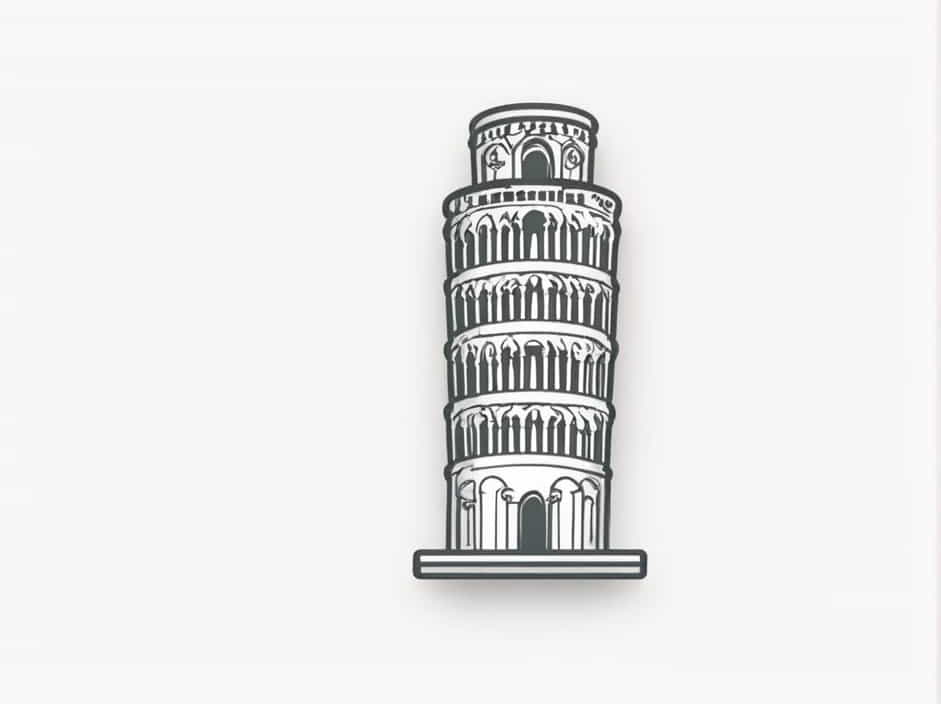The Leaning Tower of Pisa is one of the most famous landmarks in the world, known for its unintended tilt. Built in the 12th century, this bell tower has defied gravity for centuries, attracting millions of tourists each year. But with its noticeable lean, many people wonder: Will the Leaning Tower of Pisa eventually fall?
This topic explores the history, causes of the tilt, and the measures taken to preserve the tower, along with expert predictions about its future stability.
The History of the Leaning Tower of Pisa
1. When Was It Built?
Construction of the Leaning Tower of Pisa began in 1173 as part of the Pisa Cathedral complex in Italy. The tower was designed to be a freestanding bell tower, reaching a height of 56 meters (183 feet). However, problems arose soon after the construction started.
2. Why Did It Start Leaning?
The tower began tilting during construction because of the soft and unstable soil beneath it. The ground consists of clay, fine sand, and silt, which could not support the tower’s weight. As a result, the foundation sank unevenly, causing the tower to tilt to one side.
3. Attempts to Fix the Lean
Throughout history, architects and engineers have tried to stop the tower from leaning further. Some efforts accidentally worsened the tilt, while others helped stabilize it. Major restoration projects in the 20th and 21st centuries have prevented collapse and even slightly reduced the tilt.
How Much Does the Tower Lean?
1. The Worst Lean in History
By 1990, the Leaning Tower of Pisa had reached an alarming tilt of 5.5 degrees, increasing concerns that it might collapse. At that point, it was closed to the public for safety reasons.
2. Current Lean After Stabilization
Thanks to engineering efforts, the tower now leans at about 3.97 degrees. This means the top is still offset by nearly 4 meters (13 feet) from its intended position. While this is still a significant tilt, it is much safer than before.
Why Hasn’t the Leaning Tower of Pisa Fallen?
1. Strong Foundation Despite the Soft Soil
Although the soil beneath the tower is unstable, its deep foundation has helped prevent immediate collapse. The weight of the tower also creates a counteracting force that stabilizes it.
2. Structural Adjustments Over the Centuries
Builders unknowingly adapted to the tilt as they continued construction, making slight adjustments to keep the tower balanced. The later stages of construction included columns and arches that helped distribute weight more evenly.
3. Modern Engineering Interventions
Between 1993 and 2001, experts carefully removed soil from underneath the higher side of the foundation, slowly reducing the tilt. They also installed counterweights and anchored the base to prevent further movement.
Will the Leaning Tower of Pisa Ever Fall?
1. Experts Say It’s Stable for At Least 200 Years
Engineers believe that the latest restoration efforts have secured the tower for at least two more centuries. Barring major earthquakes or drastic environmental changes, the Leaning Tower of Pisa is not expected to collapse anytime soon.
2. Earthquakes Pose the Biggest Threat
Since Pisa is in an earthquake-prone region, a strong earthquake could potentially damage the tower. However, the loose soil that caused the tilt may actually help absorb some seismic shocks, reducing the risk of collapse.
3. Future Preservation Efforts
To ensure the tower remains standing, experts continue to monitor its movement. If needed, further adjustments, such as reinforcing the foundation or making slight tilting corrections, may be applied.
What Would Happen If the Tower Fell?
1. Loss of a Cultural Icon
The Leaning Tower of Pisa is a UNESCO World Heritage Site and one of Italy’s most famous landmarks. If it collapsed, the world would lose an architectural treasure that has stood for nearly 850 years.
2. Economic Impact on Pisa
Tourism plays a huge role in Pisa’s economy. If the tower were to fall, the city would lose one of its biggest attractions, affecting local businesses, hotels, and restaurants.
3. Scientific and Engineering Implications
If the tower collapsed, it would provide valuable insights into historic construction methods and failure mechanisms. Engineers and architects could study the event to improve techniques for preserving other historical structures.
The Leaning Tower of Pisa has stood the test of time despite its precarious tilt. Thanks to modern engineering efforts, experts believe the tower is safe for at least the next 200 years. While natural disasters like earthquakes could pose a threat, ongoing monitoring and preservation efforts will likely ensure its survival for generations to come.
So, will the Leaning Tower of Pisa fall? Not anytime soon!
